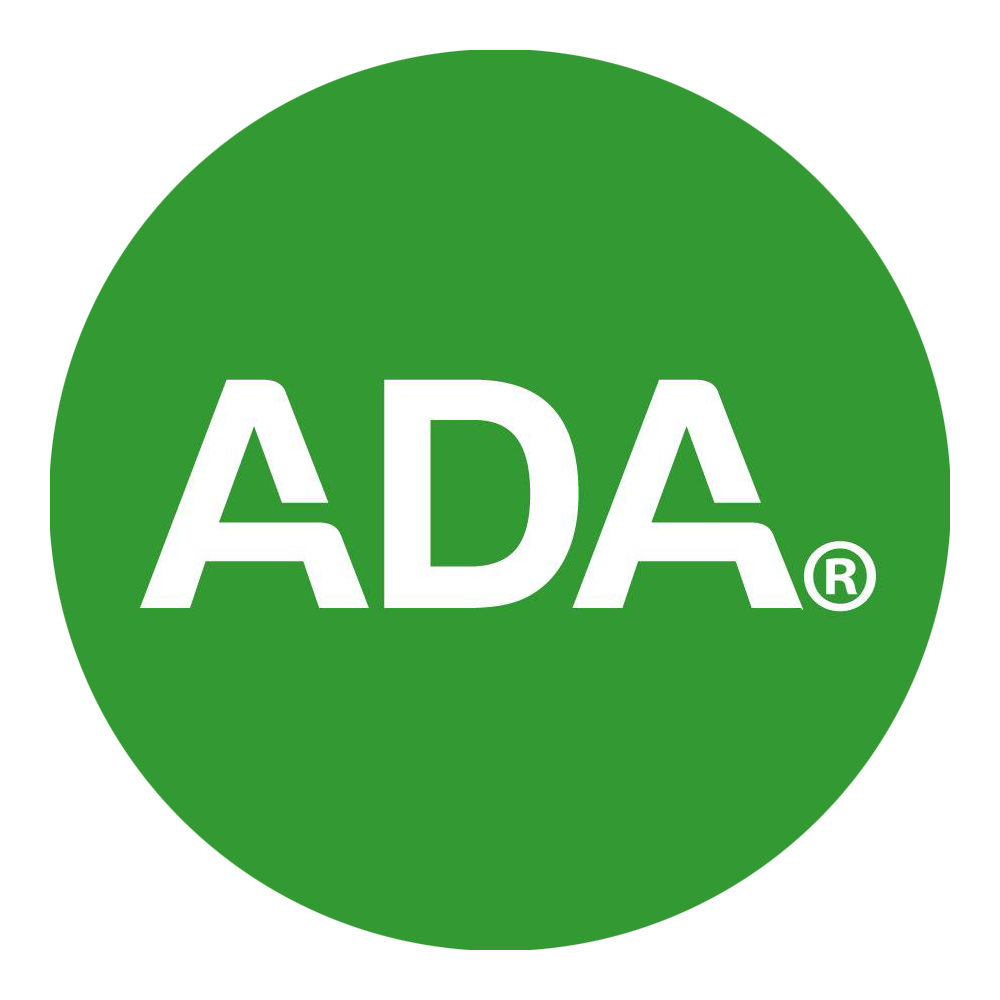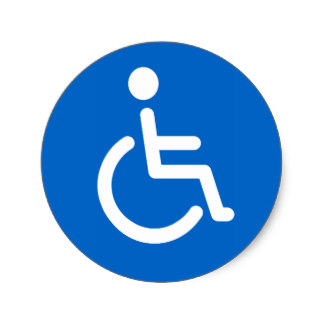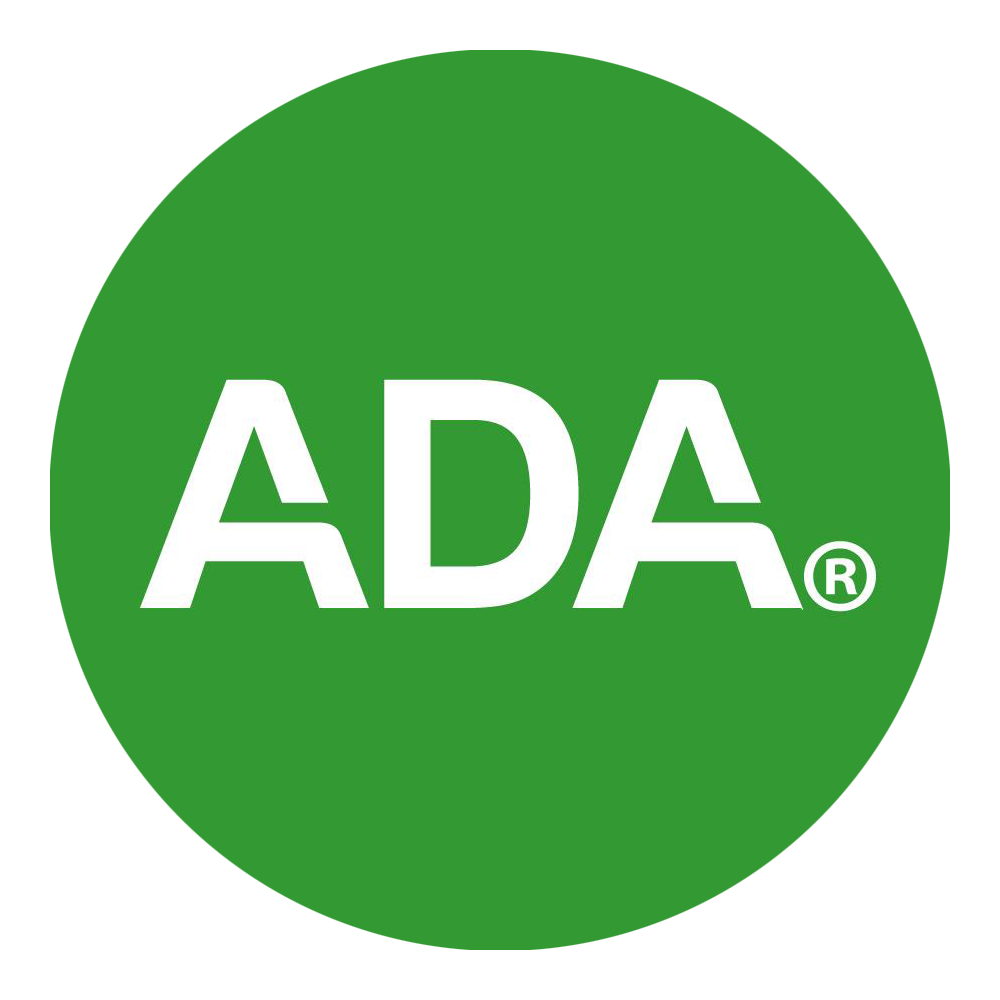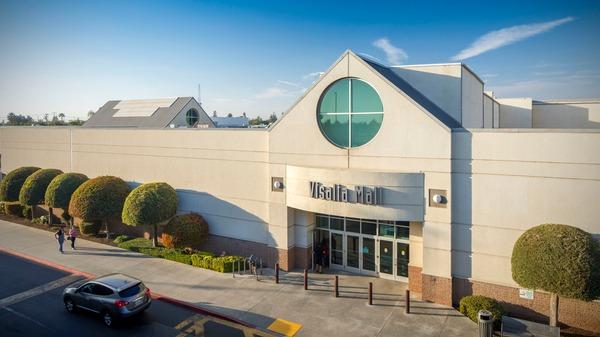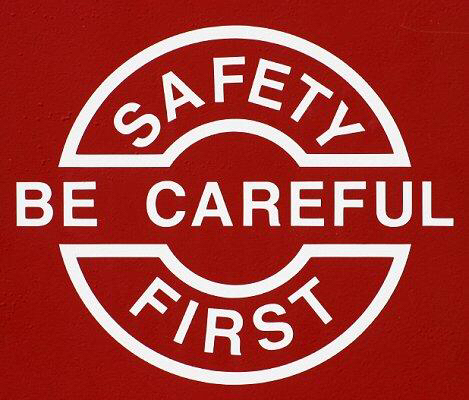Information
-
Location
-
Conducted on
-
Prepared by
- Accessible Approach/Entrance
Route of Travel
-
Location
-
is the running slope no greater than 1:20 (5%) and cross slope no greater than 1:48 (1%)? [403.3]
-
are grates and openings along the route no greater than 1/2" wide and perpendicular to the route of travel? [302.3]
-
if the route is greater than 200' and less than 60" wide, is there a passing space no less than 60"x60"? [403.5.3]
-
Is there a route of travel that does not require the use of stairs? [206.2.1]
-
Is the route of travel stable, firm, and slip resistant? [302.1]
-
Is the route at least 36" wide? [403.5.1]
-
Width:
-
Can all objects protruding into the circulation paths be detected by a person with a visual disability using a cane? [307.2]
-
Distance from wall/height:
-
Do curbs on the route have curb cuts at drives, parking, and drop-offs? [402.2]
Ramps
-
Location
-
Are the slopes of ramps no greater than 1:12 (8.33%)? [405.2]
-
Slope:
-
Do all ramps longer than 6 feet have hand railings on both sides? [405.8]
-
Is the width between railings or curbs at least 36"? [405.5]
-
Width:
-
Are ramps non-slip? [405.4]
-
Is there a 5'x5' level landing at every 30-foot horizontal length of ramp and at switchbacks, and a 5' long level landing as wide as the ramp at the top and bottom of the ramp? [405.7.4, 405.7.2, 405.7.3]
-
Length:
-
Does the ramp rise no more than 30 inches between landings? [405.6]
-
Rise:
Ramp Railings
-
Location
-
does the surface of the ramp extend at least 12" beyond the inside face of the handrail or have a curb or barrier that prevents the passage of a 4" diameter sphere? [405.9.1, 405.9.2]
-
Are hand railings sturdy and between 34 and 38 inches high? [505.4]
-
Height:
-
does the handrail extend 12" beyond the top and bottom of ramp and return to a wall, guard or landing surface? [505.10.1]
-
measurement
-
if noncircular, perimeter no less than 4" or greater than 6 1/4" and cross section no greater than 2 1/4" [505.7.2]
-
measurement
-
if circular, is it no less than 1 1/4" or greater than 2" in diameter [505.7.1]
-
measurement
-
is gripping surface continuous and unobstructed? if obstructed, then no more than 20% [505.3, 505.6]
-
percent obstructed
Entrance
-
Location
-
Do all inaccessible entrances have signs indicating the location of the nearest accessible entrance? [216.6]
-
is there a sign at the accessible entrance with the international symbol of accessibility? [216.6]
-
If there are stairs at the main entrance, is there also a ramp or lift, or is there an alternative accessible entrance? [206.2.1]
-
Does the entrance door have at least 32 inches clear opening (for a double door, at least one 32-inch leaf)? [404.2.3]
-
Inches of clear opening:
-
Is there at least 18 inches of clear wall space on the pull side of the door, next to the handles? [404.2.4]
-
Inches of clear space:
-
if there are two doors in a series, is the distance between the doors at least 48" and 48" clear when door sings into space? [404.2.6]
-
Is the threshold edge 1/4-inch high or less, or if beveled edge, no more than 3/4-inch high? [404.2.5]
-
Height:
-
If provided, are carpeting or mats a maximum of 1/2-inch high? [302.2]
-
Height:
-
Are edges securely installed to minimize tripping hazards? [302.2]
-
Is the door handle no higher than 48 inches and operable with a closed fist? [404.2.7]
-
Height:
-
Knobs:
-
If the door has a closer, does it take at least 5 seconds to close? [404.2.8]
-
Seconds:
-
Does the door have an automatic opener?
-
Are the controls operable?
-
Does the door control have a level 30"x48" clear floor space outside of the door swing? [404.3.5, 305.3]
-
Is the door closing speed at least 5 seconds? [404.2.8, ANSI/BHMA A156.10, ANSI/BHMA A156.19]
-
Are the door controls mounted between 34" minimum and 48" maximum above finish floor? [404.2.7]
-
Is the control mounted between 1 and 5 feet from the center of the door? [404.2.8, ANSI/BHMA A156.10, ANSI/BHMA A156.19]
-
If the control is mounted greater than 7 feet from the center of the door, is there an additional door closing speed time delay of 2 seconds for each additional foot? [404.2.8, ANSI/BHMA A156.10, ANSI/BHMA A156.19]
Access to Goods and Services
Interior Building Circulation: Hallways and Lobbies
-
Location
-
Are there ramps, lifts, or elevators to all public levels? [206.2.4]
-
Does the accessible entrance provide direct access to the main floor, lobby, or elevator? [206.4]
-
Are all public spaces on an accessible route of travel? [206.2.4]
-
is the route stable, firm and slip resistant? [304.2, 302.1]
-
Is the accessible route to all public spaces at least 36" wide? [403.5.1]
-
Width:
-
in waiting rooms and lobbies, is there at least one space 36"x48" for wheelchair access? [802.1.2, 802.1.3]
-
if signs that provide direction or info about interior spaces, does the text contrast with background and mounted so that the characters are at least 40" above the floor [703.5.1, 703.5.5]
-
are all objects on circulation paths protrude no more than 4" from wall or if an object protrudes more than 4" is the bottom leading edge at 27" or lower or at 80" or higher from the floor? [307.2, 307.4]
-
measurement
-
if the route is greater than 200' in length, is there a passing space at least 60"x60"? [403.5.3]
-
Is there a 5-foot circle or a T-shaped space for a person using a wheelchair to reverse direction? (recommended, [403.5.2])
-
Width:
Interior Ramps
-
Location
-
Is the width between railings or curbs at least 36"? [405.5]
-
is gripping surface continuous and unobstructed? if obstructed, then no more than 20% [505.3, 505.6]
-
if circular, is it no less than 1 1/4" or greater than 2" in diameter [505.7.1]
-
if noncircular, perimeter no less than 4" or greater than 6 1/4" and cross section no greater than 2 1/4" [505.7.2]
-
does the handrail extend 12" beyond the top and bottom of ramp and return to a wall, guard or landing surface? [505.10.1]
-
Are handrails sturdy and between 34 and 38 inches high? [505.4]
-
measurement
-
does the surface of the ramp extend at least 12" beyond the inside face of the handrail or have a curb or barrier that prevents the passage of a 4" diameter sphere? [405.9.1, 405.9.2]
-
Does the ramp rise no more than 30 inches between landings? [405.6]
-
Is there a 5' long level landing that is at least as wide as the ramp at the top and bottom of ramps, and a 5'x5' level landing at switchbacks? [405.7.2, 405.7.3, 405.7.4]
-
Are ramps non-slip? [405.4]
-
Are the slopes of ramps no greater than 1:12 (8.33%)? [405.4]
-
measurement
-
Do all ramps longer than 6 feet have railings on both sides? [405.8]
Drinking Fountains
-
Location
-
is the drinking fountain spout at least 15" from the rear of the fountain and no more than 5" from the front? [602.5]
-
is the drinking fountain spout outlet no higher than 36" above the floor? [602.4]
-
measurement
-
if the drinking fountain is no less than 20" and no greater than 25" deep, are the operable parts no higher than 44" above the floor? [308.2.2]
-
if the drinking fountain is no deeper than 20", are the operable parts no higher than 48" above the floor? [308.2.2]
-
Is there one fountain with its spout no higher than 36 inches from the ground, and another with a standard height spout (or a single "hi-low" fountain)? [211.2, 602.7, 602.4]
-
Is each water fountain cane-detectable (located within 27 inches off the floor or protruding into the circulation space less than 4 inches from the wall? [307.2]
-
Are controls mounted on the front or on the side near the front edge, and operable with one closed fist? [309.4]
-
if there is a forward approach, do no less than 17" and no greater than 25" of the clear floor space extend under the fountain? [306.2.3, 306.2.2]
-
Is there at least one fountain with clear floor space of at lest 30 by 48 inches in front? [305.5]
Classrooms and Offices
-
Location
-
Raised characters, sized between 5/8"-2" high, with high contrast? [703.5.5]
-
Are signs mounted on the wall adjacent to latch side of door, or as close as possible? [703.4.2]
-
Are signs mounted between 48" and 60" above the finished floor, measured 48" from the baseline of the lowest tactile character and measured 60" from the baseline of the highest tactile character? [703.4.1]
-
measurement
-
If mounted above 80 inches, do signs have letters at least 2 inches high, with high contrast, and non-glare? [703.5.1, 703.5.5]
-
Letter height:
-
Do directional and informational signs comply with legibility requirements? [703.5.1, 703.5.5] (Building directions or temporary signs need not comply.)
-
Noncompliant items
-
is the door opening at least 32" clear? [404.2.3]
-
if there is a front approach to the pull side of the door, is there at least 18" clearance beyond the latch side of the door and at least 60" clear depth? [404.2.4]
-
if doorway has a threshold, is it no more than 1/4" high or beveled no more than 1/2" at 3/4" high? [404.2.5, 303.2]
-
Is the door handle between 34"- 48" and operable with a closed fist? [404.2.7, 309.4]
-
height:
-
knobs:
-
Can doors be opened without too much force maximum 5 lbs. (exterior and fire doors excluded)? [404.2.9]
-
If the door has a closer, does it take at least 5 seconds to close? [404.2.8.1]
-
seconds:
-
Does the door have an automatic opener?
-
Are the controls operable?
-
Does the door control have a level 30"x48" clear floor space outside of the door swing? [404.3.5, 305.3]
-
Is the door closing speed at least 5 seconds? [404.2.8, ANSI/BHMA A156.10, ANSI/BHMA A156.19]
-
Are the door controls mounted between 34" minimum and 48" maximum above finish floor? [404.2.7]
-
Is the control mounted between 1 and 5 feet from the center of the door? [404.2.8, ANSI/BHMA A156.10, ANSI/BHMA A156.19]
-
If the control is mounted greater than 7 feet from the center of the door, is there an additional door closing speed time delay of 2 seconds for each additional foot? [404.2.8, ANSI/BHMA A156.10, ANSI/BHMA A156.19]
-
are floor surfaces stable, firm and slip resistant? [302.1]
-
Is the carpeting low-pile, tightly woven, and securely attached along the edges? [302.2]
-
Is there a 5-foot circle or T-shaped space for turning a wheelchair completely? [304.3.1, 304.3.2]
-
Width:
-
Are all aisles and pathways to materials and services at least 36" wide? [403.5.1]
-
Room:
-
Are the tops of tables or counters between 28 and 34 inches high? [902.3]
-
Room:
-
Are knee spaces at accessible tables at least 27 inches high, 30 inches wide, and 17"-25" deep? [306.2, 306.3]
-
Room:
-
are there an adequate number of wheelchair spaces? [221.2.1]
-
how many?
-
is there clear approach floor space at least 30" wide and 48" long? [305.3]
-
Where occupancy load exceeds 300, are the spaces for wheelchair seating distributed throughout? [221.2.3]
-
where people are expected to remain seated, do wheelchair spaces have a clear line of sight over and between others in front of them? [802.2.1.1, 802.1.1.2]
-
where people are expected to stand, do wheelchair spaces have a clear line of sight over and between others in front of them? [802.2.2.1, 802.1.2.2[
-
if there is a single wheelchair space, is it at least 36" wide? [802.1.2]
-
if there are two adjacent wheelchair spaces, are each at least 33" wide [802.1.2]
-
if the wheelchair space can only be entered from the side, is it at least 60" deep? [802.1.3]
-
if the wheelchair space can be entered from the front or rear, is it at least 48" deep? [802.1.3]
-
do wheelchair spaces adjoin, but not overlap, accessible routes? [802.1.4]
-
is there at least one companion seat for each wheelchair space? [221.3]
-
is the companion seat located so the companion is shoulder to shoulder with the person in the wheelchair? [802.3.1]
-
location:
-
is the companion seat equivalent in size, quality, comfort and amenities to seating in the immediate area? [802.3.2]
-
Are all controls that are available for use by the public (including electrical, mechanical, cabinet, game, self-service controls and fire alarm pull stations) located at least 48" above the floor and have a clear approach space of at least 30"x48" [309.3, 309.4 308, 305.3]
-
Height:
-
Are they operable with a closed fist?
-
Room:
-
If emergency systems are provided, do they have both flashing lights and audible signals? [702.1]
Elevators
-
Location
-
is the car interior at least 51" deep and at least 80" wide for center-opening doors or 51" deep and at least 68" wide for side (off centered) doors and a clear door opening of at least 36"? [407.4.1]
-
measurement:
-
does the sliding door reopen automatically when obstructed by an object or person? [407.3.3]
-
Are controls between 15 and 48 inches high (up to 54 inches if a side approach is possible)? [407.4.6.1, 408.4.6]
-
Is there a sign on both elevator door jambs at every floor identifying the floor in raised and Braille letters? [407.2.3, 408.2.3]
-
Are there both visible and verbal or audible door opening/closing and floor indicators (one tone=up, two tones=down)? [407.4.8.2]
-
On each level, if there are stairs between the entrance and/or elevator and essential public areas, is there an accessible alternate route? [206.3, 206.2.4]
-
Are the call buttons in the hallway no higher than 54"? [407.2.1.1]
-
Height:
-
Do the controls inside the cab have raised and Braille lettering? [407.4.7.1, 703.2]
-
Is there a two-way means of emergency communication in the car? [407.4.9, ASME A17.1]
-
Is the emergency intercom identified by Braille and raised letters? [407.4.9, 309, 703.2]
-
Is the term "HELP" located either on or adjacent to the button? [407.4.9, ASME A17.1]
-
is the emergency communication device activated by a push button? [407.4.9, ASME A17.1]
-
Are operating instructions provided [407.4.9, ASME A17.1]
-
is there a visual signal to acknowledge that the call has been received [407.4.9, ASME A17.1]
Lifts
-
Location
-
Can the lift be used without assistance? [410.1]
-
Is there at least 30 by 48 inches of clear space for a person in a wheelchair to approach to reach the controls and use the lift? [410.5]
-
if the lift has a side door, is the clear opening at least 42" wide? [410.6]
-
is there a clear floor space at least 36"x48" inside the lift? [410.3]
-
Are there both visible and verbal or audible door opening/closing and floor indicators (one tone=up, two tones=down) for the lift? [407.4.8]
-
are the lift in-car controls centered a side wall? [408.4.6]
-
Are the lift controls between 15 and 48 inches high (up to 54 inches if a side approach is possible)? [408.4.6, 407.4.6.1]
-
is the lift at least 51"x51" with an opening of at least 36" or 54" deep and 36" wide with at least 15 sq. ft. of clear floor area and an end door opening of at least 32" wide? [408.4.1]
-
if lift has a swinging door, is it power operated and remain open for at least 20 seconds? [403.3.2]
-
Do the controls inside the lift cab have raised and Braille lettering? [407.4.7.1, 703.2]
-
Is there a sign on both lift door jambs at every floor identifying the floor in raised and Braille letters? [407.2.3, 408.2.3]
Stairs
-
Location
-
Are there ADA compliant tactile exit signs posted both inside and in the stairwells? [IFC 1022.9, 1022.9.1]
-
Does the interior stairwell sign indicate the floor level and meet ADA standards for signage? [IFC 1022.9, 1022.9.1]
-
Do stairs have continuous rails on both sides, with extensions beyond the top and bottom stairs? [505.3, 505.10.2, 505.10.3]
-
Do treads have a non-slip surface? [302.1, 504.1]
-
If building is not sprinkled, are there areas of refuge in the stairwells? [IBC 1007.6]
-
Are there posted instructions on use of the area that meets ADA visual requirements? [IBC 1007.6.4, IBC 1007.6.5, 216.4.2, 703.5]
-
Is there a two-way communication system with both audible and visual signals that connect to a central control point? [IBC 1007.6.3]
-
Is there at least one 30"x48" wheelchair space available in the area of refuge for every 200 occupants served and does not encroach into the egress path? [IBC 1007.6.1]
-
Are the stairwells serving the area of refuge no less than 48" clear width between the handrails? [IBC 1007.3]
Usability of Rest Rooms
-
Restroom Location
Getting to the Rest Rooms
-
is there an accessible route to the accessible toilet? [206.2.4]
-
If rest rooms are available to the public, is at least one rest room (either one for each sex, or unisex) fully accessible? [213.2]
-
Are there signs at inaccessible rest rooms that give directions to accessible ones? [216.8]
Doorways and Passages
-
Is there tactile signage identifying accessible rest rooms? [216.8, 703.5, 703.2, 703.3, 703.4.2, 703.4.1]
-
Are pictograms or symbols used to identify rest rooms, and, if used, are raised characters and Braille included below them? [216.8, 703.3]
-
Is the doorway at least 32" clear? [404.2.3]
-
Are doors equipped with accessible handles (operable with a closed fist), 48 inches high or less? [404.2.7, 309.4]
-
Can doors be opened easily (5 lb maximum force)? [404.2.9]
-
Does the entry configuration provide adequate maneuvering space for a person using a wheelchair? [404.2.4.1]
-
Clear width:
-
18" clear on pull side of door with 60" clear on latch side [404.2.4]
-
if privacy wall and door swings in, is there at least 24" clearance beyond the latch side and at least 48" to the privacy wall if no closer, if closer than at least 54"? [404.2.4]
-
if privacy wall and door swings out, is there at least 24" clearance beyond the latch side and 42" to the privacy wall? [404.2.4]
-
if two doors are in a series, is the space at least 48" between the doors or 48" between the doors when swinging into the space? [404.2.6]
-
if door has a closer, does it take at least 5 seconds to close? [404.2.8.1]
-
if doorway has a threshold, is it no more than 1/4" high or beveled no more than 1/2" at 3/4" high? [404.2.5, 303.2]
-
Is there a 36-inch-wide path to all fixtures? [403.5.1]
-
Width:
-
is there clear floor space in room to turn around in? 60" radius [603.2.1, 603.2.3]
-
width:
Stalls
-
When there are at least 6 stalls, is there at least one ambulatory stall between 35"-37" wide and 60" deep? [604.8.2.1]
-
is there a grab bar mounted at least 42" long on both sides of the stall and between 33"-36" above the floor? [604.8.2.3, 604.5.1]
-
is the grab bar mounted no greater than 12" from the back wall? [604.5.1]
-
is the space between the wall and grab bar 1 1/2"? [609.3]
-
Is the stall door self closing and at least 32" wide? [604.8.2.2]
-
is there at least 12" clearance between the grab bar and protruding objects above and 1 1/2" below? [609.3]
-
is the centerline of the water closet between 17"-19" from the wall or partition? [604.2]
-
is there at least 42" clear space from the stall to any obstruction? [604.8.2.2]
-
is there a coat hook mounted between 15"-48" off floor [604.8.3, 603.4, 308.2.1]
-
Is the ADA stall door self closing [604.8.1.2]
-
Are there door pulls on both sides of the door mounted between 34"-48" off floor that can be operated with a closed fist [604.8.1.2, 404.2.7]
-
is the lock operable with a closed fist? [309.4]
-
Is the accessible stall at least 60" wide and 56" deep with no obstructions located within the required water closet clearance? [604.3.1]
-
Length/width
-
if door swings in, is minimum space provided beyond the swing of the door? 56" or 59" respectively [604.8.1.1]
-
if water closet floor mounted, is compartment at least 59" deep? [604.8.1.1]
-
if water closet wall hung, is compartment at least 56" deep? [604.8.1.1]
-
is the compartment at least 60" wide? [604.8.1.1]
-
if front approach, then at least 18" clearance beyond latch side and 60" clear depth or no less than 42" clear depth from any obstruction from the latch side. [604.8.1.2, 404.2.4.1]
-
is the door opening at least 32" in the clear? [604.8.1.2]
-
In the accessible stall, are there grab bars behind and on the side wall nearest to the toilet? [604.5.1, 609.4, 609.3, 604.5.2]
-
42" minimum length bar mounted on side wall between 33"-36" above floor, with no more than 12" clearance between back wall and grab bar with grab bar end extending a minimum of 54" from back wall
-
36" minimum length bar mounted 33"-36" above floor and extend at least 24" and 12" from center of toilet respectively
-
is the space between the wall and grab bar 1 1/2"?
Water Closets
-
Is the toilet seat 17 to 19 inches high? [604.4]
-
Height:
-
If more than one urinal is provided, is there one (wall mount) that is at least 13.5" deep and the rim mounted no higher than 17" off the floor. If stall type, at least 13.5" in depth and clear floor space of at least 30"x48"? [605.2, 605.3]
-
is the centerline of the water closet between 16"-18" from the wall or partition? [604.2]
-
is the flush control located on the open side of the water closet? [604.6]
-
can the flush valve be operated with one hand and require no more than 5 pounds to operate? [605.4]
-
if hand operated, is flush valve located no higher than 48" off the floor? [604.6]
Stall Accessories
-
are all accessories and receptacles inside the stall mounted between 15"-48" off floor [603.4, 308.2.1]
-
measurement:
-
does the toilet paper dispenser allow continuous paper flow? [604.7]
-
is the toilet paper dispenser outlet mounted between 15"-48" off the floor and not behind grab bars? [604.7]
-
is the toilet paper dispenser between 7"-9" from the front of the toilet to the center of the dispenser? [604.7]
-
is there at least 12" clearance between the grab bar and protruding objects above and 1 1/2" below? [609.3]
Lavatories
-
are all pipes covered or insulated below the lavatory? [606.5]
-
is there at least 9" off floor of toe clearance that does not extend more than 6" from wall? [306.3.3]
-
does one lavatory have between 17"-25" of clear floor space under the lavatory? [306.2]
-
Can the faucet be operated with a closed fist? [606.4]
-
Does one lavatory have a 30-inch-wide by 48-inch-deep clear space in front? [606.2]
-
Clear space:
-
Is one lavatory rim no higher than 34 inches? [606.3]
-
Height:
-
Is there at least 27 inches from the floor to the bottom of the lavatory apron that extends at least 8" under the lavatory? [306.3.3]
-
Height:
Restroom Accessories
-
Are soap and other dispensers and hand dryers within reach ranges and usable with one closed fist? [308.2, 308.2.1, 308.2.2, 309.4]
-
measurement and dispenser:
-
Is the mirror mounted with the bottom edge of the reflecting surface 40 inches high or lower? [603.3]
-
Height:
-
If a shelf is provided, is it mounted between 40"-48" above the floor? [603.4]
Observations
-
Notes
